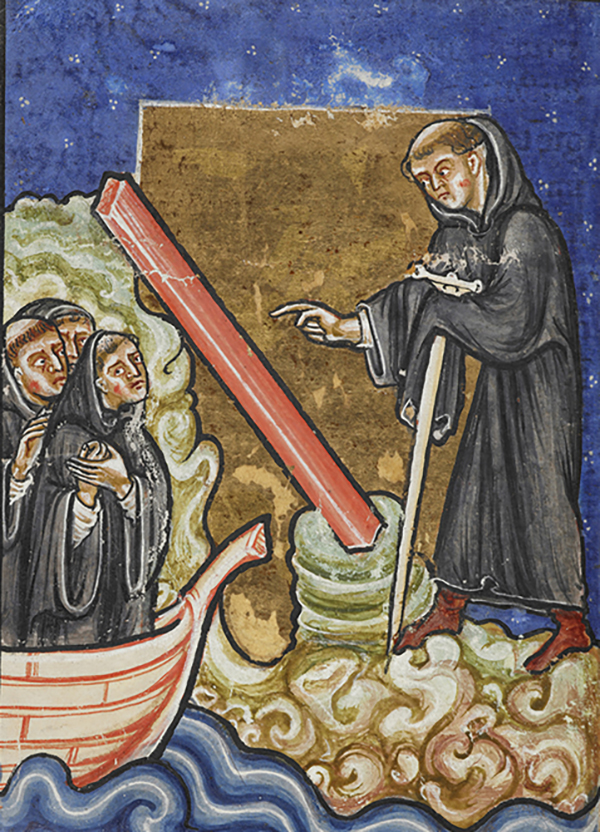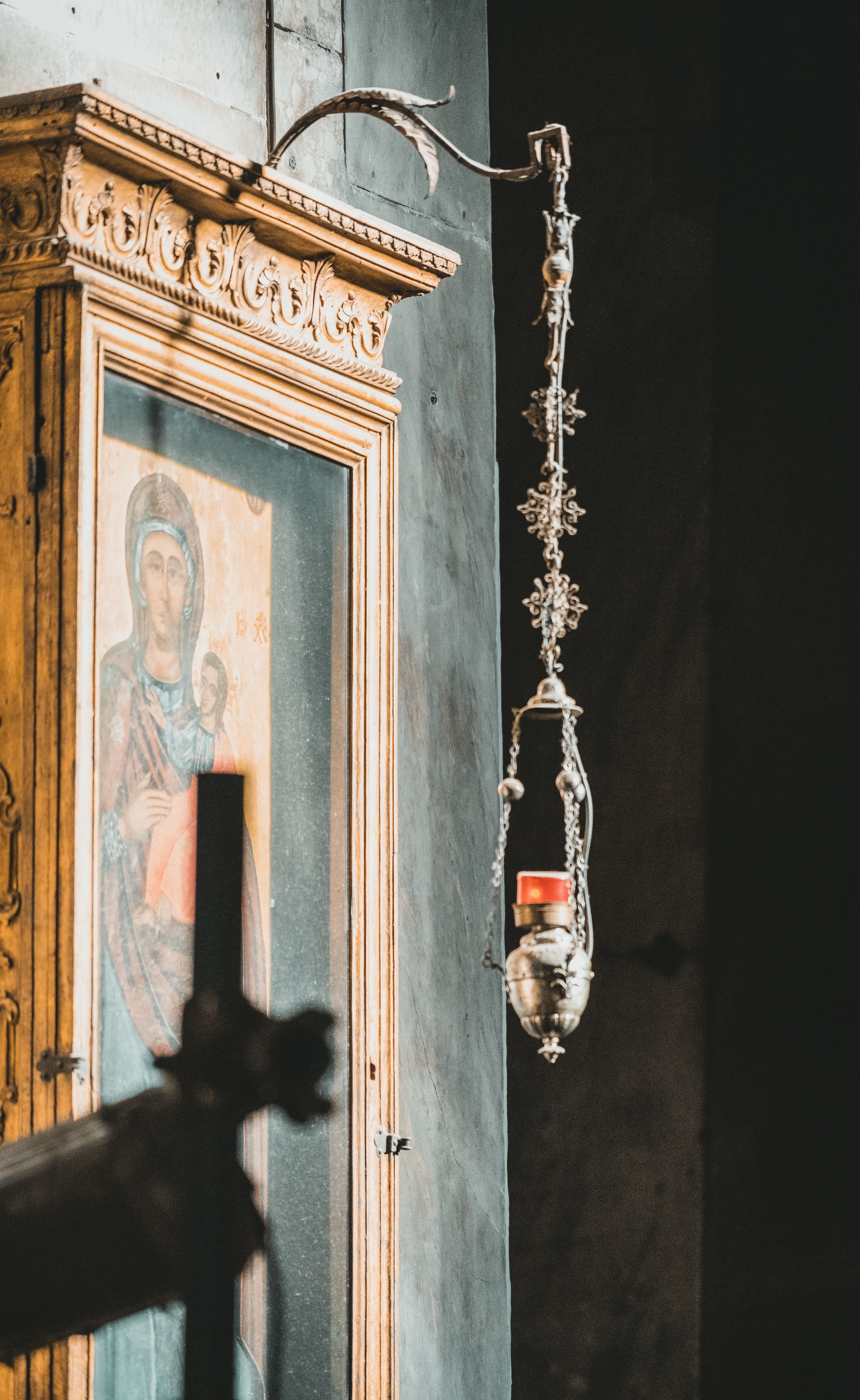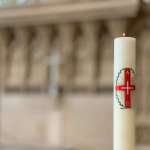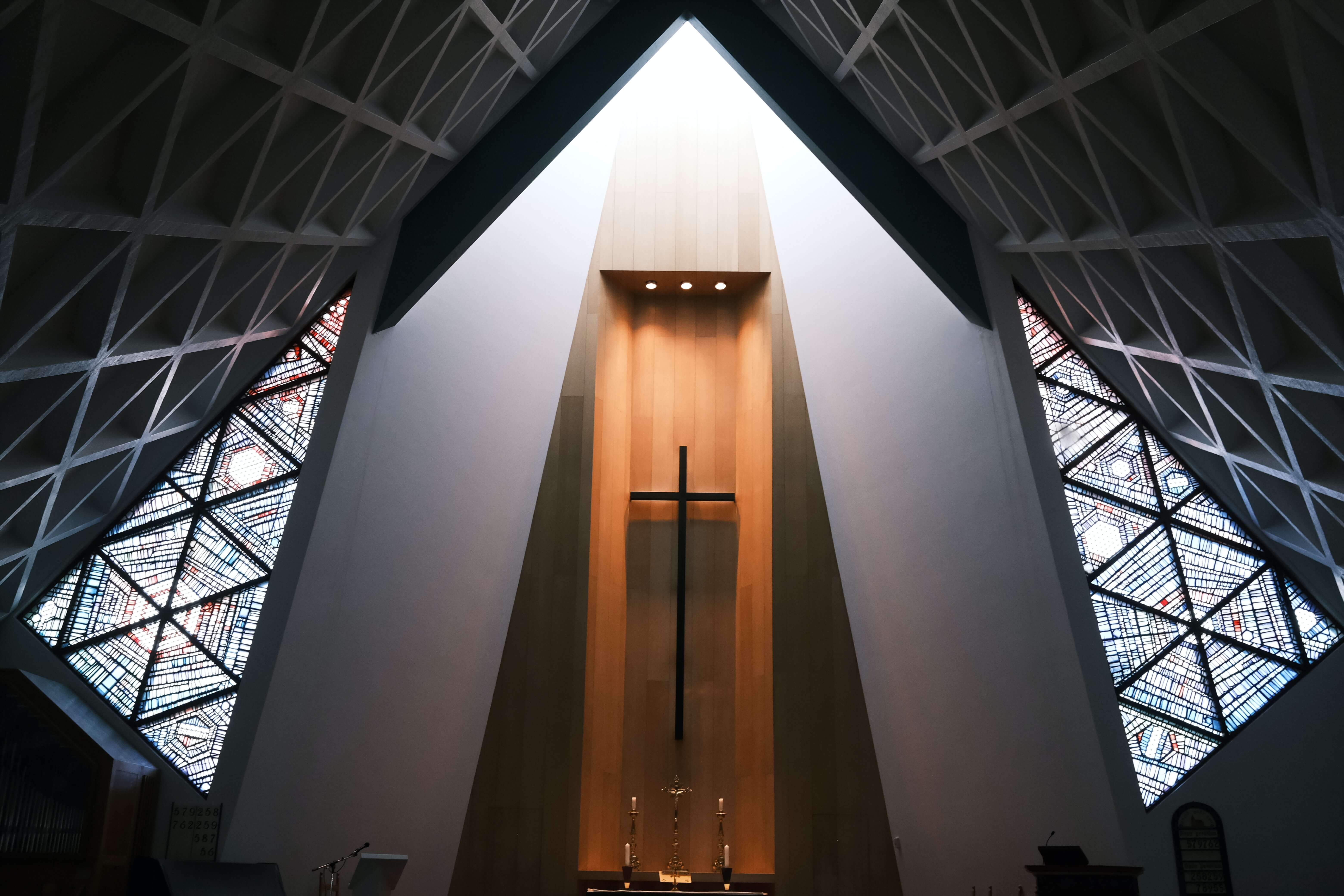By Kimberly Bruce
Perhaps the most popular saint in England before the martyrdom of St. Thomas Becket in the year 1170, St. Cuthbert (feast day: 4 September) was known as the “wonder-worker” for the many miracles performed during his lifetime and after his death.
As bishop of Lindisfarne off England’s wild and stormy northeast coast in the 7th century, St. Cuthbert spent years evangelizing in the most remote places. His body, twice exhumed since his death in 687 A.D., was found to be incorrupt.

A shepherd’s vision
Cuthbert was born in 635 A.D. in the kingdom of Northumbria, at that time a vast expanse of northern England and southern Scotland. When he was 16 and working as a shepherd, guiding his flock, he had a vision. He saw the soul of his bishop, the future St. Aidan of Lindisfarne, carried to Heaven by angels —and it was at the precise time of the bishop’s earthly death. Cuthbert immediately sought entrance at a monastery to become a monk.
At Mailros (Melrose) Abbey, Cuthbert began studying Holy Scripture and soon exceeded his fellow monks in ascetic practices, always striving for humility. His duty was to meet with strangers who arrived at the door, which was considered one of the most dangerous jobs in the monastery.
True contemplative
As a monk, he was a true contemplative who spent his nights in deep prayer, rarely getting much sleep. On one occasion, Cuthbert was followed at night by a fellow monk who observed him enter the sea up to his armpits and begin singing praises to God.”
When another monk complained to Cuthbert that he had been awakened from sleep (probably by Cuthbert walking around in prayer as he would do at night), Cuthbert replied (according to his biographer, St. Bede):
“No one can displease me by waking me out of my sleep, but, on the contrary, give me pleasure; for, by rousing me from inactivity, he enables me to do or think of something useful.”
Saint Cuthbert’s thoughts surely resembled St. Faustina’s, when she wrote:
“During this day I remained as though in unceasing contemplation; the very thought of this grace drew me into further contemplation; and throughout the whole day I continued in thanksgiving which I never stopped, because each recollection of this grace caused my soul, ever anew, to lose itself in God” (Diary of Saint Maria Faustina Kowalska, 1416).
In the years 663-664 A.D. during the Synod of Whitby, the Northumbrian king and the monastic priors agreed to adopt Roman religious customs as opposed to Celtic ones (such as following the Roman calendar for the date of Easter), a move that fostered unity amongst Christians in England and beyond. Cuthbert readily complied with the rulings of this synod when he was appointed prior of the monastery at age 29, and implemented a strict rule.
Eloquence
Word of Cuthbert’s holiness spread, as he began to work diligently to reach those outside the monastery walls needing conversion from their heathen ways. His generosity to the poor and reputation as a healer and confessor spread far and wide.
Souls flocked to hear him speak, asking him to hear their confessions. Meek and humble Cuthbert shared Our Lord’s mercy and love with his penitents. He often shed tears with his penitents when they shed their own tears of repentance during Confession.
In 676 A.D., at age 41, Cuthbert received permission to live his beloved life as a hermit, once again, this time on the uninhabited island of Inner Farne, not far from Lindisfarne. He built himself an oratory and cell in which to live. As there was no source of fresh water on the island, Cuthbert dug a trench and prayed — and water miraculously materialized in his cell!
Eight years later in 684, Archbishop Theodore appointed Cuthbert bishop of Hexham. Weeping bitterly, as he wished to remain a hermit, he accepted. Bishop Cuthbert soon exchanged bishoprics with Bishop Eata to become bishop of Lindisfarne, closer to his beloved Inner Farne.
Visions and miracles
In 685 A.D., Bishop Cuthbert saw a vision of King Ecgfrith of Northumbria as he was being overthrown and killed at the hands of Pict invaders at the exact moment the events occurred.
Many miracles took place through Bishop Cuthbert’s prayers. One of these was the healing of a noble’s wife who had been on the verge of death.
Bishop Cuthbert again took up travelling, preaching, and aiding the poor as he had done as a humble priest. A short two years later, however, as his health was declining, and he knew that death was approaching, he resigned the bishopric and returned to Inner Farne.
Sanctity
He died on March 20, 687 A.D., and was immediately declared a saint by his fellow monks of Lindisfarne, where Cuthbert was buried. His sanctity was confirmed 12 years after his death when his coffin was opened and his body was incorrupt.
The second time St. Cuthbert was found incorrupt was in 1104, when his body was moved to a shrine in the recently-completed Durham Cathedral, which became a major pilgrimage site during the Middle Ages. With the saint’s body was found the head of St. Oswald, king and martyr, which had been placed with St. Cuthbert’s body for safekeeping. (This is why St. Cuthbert is often depicted holding an emblem in his hands with the head of St. Oswald upon it.)
England’s earliest medieval saint became the “go-to” saint for not only common folk but for princes and kings, who asked for his prayerful intercession for protection in battle.
Sadly, St. Cuthbert’s shrine was destroyed during the Reformation. Some relics were found in 1827, such as his pectoral cross and wooden coffin, and are housed today in the Durham Cathedral museum.
Saint Cuthbert, “Wonder-worker of England” and great miracle worker, pray for us!






